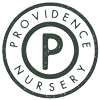April 17, 2023

Buying new plants for your flower garden is exciting and teeming with possibilities. To get the most out of your money, there are a few things to think about when looking for new plants. The following considerations will help you choose the best plants for your climate, yard, and preferences.
When choosing plants for your landscape, one of the most critical aspects is picking ones suitable for your local climate. You want plants that handle your average winter and summer temperatures and have enough time to flower or mature in the growing season window.
You may have heard the phrase “USDA Hardiness Zone” before. Hardiness zones, commonly called growing zones, are a classification system where the US is divided into 10°F zones based on average low winter temperatures. Growers use these zones to determine which plants are suitable for their area.

Photo Credit: USDA Agricultural Research Service
You can determine your hardiness zone by using a USDA Hardiness Zone Map. Enter your zip code into the interactive map, and it will tell you your growing zone.
Plants have varying sun exposure needs, ranging from full sun to full shade, and it’s important to match plants to how much sun your yard gets. For example, flowering plants like roses and lilacs need lots of light, or their blooms will suffer. Plants that thrive in the shade—hostas are a great example—do not tolerate full sun well.
Full-sun plants need six or more hours of direct sunlight each day. The light can be broken up throughout the day if the total is longer than six hours.

Partial sun plants need between four and six hours of direct sun and prefer sunlight amounts closer to the six-hour mark.
Partial shade plants prefer slightly less light than partial sun plants but still need a minimum of four hours.
Full-shade plants thrive with less than four hours of sun daily.

Deciding between annual or perennial plants is another matter of personal preference. Both have advantages and disadvantages; when combined, you can use them to create beautiful yards and gardens.
What are annuals? What are their pros and cons?
Annuals are plants that live for a single growing season. They typically die after flowering or when temperatures drop in the fall and must be replanted yearly. In general, they provide quick color and are relatively inexpensive to purchase.
Common annual plants include petunias, impatiens, geraniums, marigolds, and zinnias.
What are perennials? What are their pros and cons?
Perennials live for multiple years, so you don’t need to replant them every spring. They usually have a higher cost, but this evens out over time since they have a longer lifespan. Perennials are generally hardier, so they do well in colder climates and have lower maintenance needs.
Common perennials include shrubs, hostas, ornamental grasses, hydrangeas, black-eyed Susans, peonies, and daylilies.

It’s also essential to consider how much time and effort you want to put into maintaining your plants. Some homeowners like to putter in the yard and tend to their plants; others want as little work as possible.
Trees and shrubs need pruning to keep them looking nice but have relatively low-maintenance fertilizer and watering needs. Roses can be high-maintenance, but if you want something easier to care for, Knock-Out roses are self-cleaning, so they don’t need constant deadheading.
Lastly, you’ll want to think about color schemes when choosing plants. You can always choose the classic monochromatic color and mix flower sizes and textures to create variety. Or you can use complementary colors to intensify each other, making them stand out more than on their own.
Remember that bright colors help energize a space and shine in the sun. They’ll also help highlight landscape features but can make a space seem smaller. On the other hand, pastel-colored plants and flowers brighten a space, making it feel bigger and more expansive. They are also peaceful and calming.
If you’re interested in ordering nursery plants from our team, we’d love to help you realize your gardening dreams. Explore our available plants for sale, and contact us to get started! Our dedicated staff is available to help with any questions and is always willing to offer suggestions!

April 03, 2023

December 22, 2022
Low-maintenance shrubs make an excellent addition to your landscaping by reducing the time you spend taking care of them throughout the season. Surprisingly, low maintenance doesn’t always mean you’re stuck with dull, green shrubs that look like every other hedge up and down your block.
If you’re looking for a brilliantly-colored, low-needs landscape shrub, look no further than the beautiful barberry!

November 21, 2022

